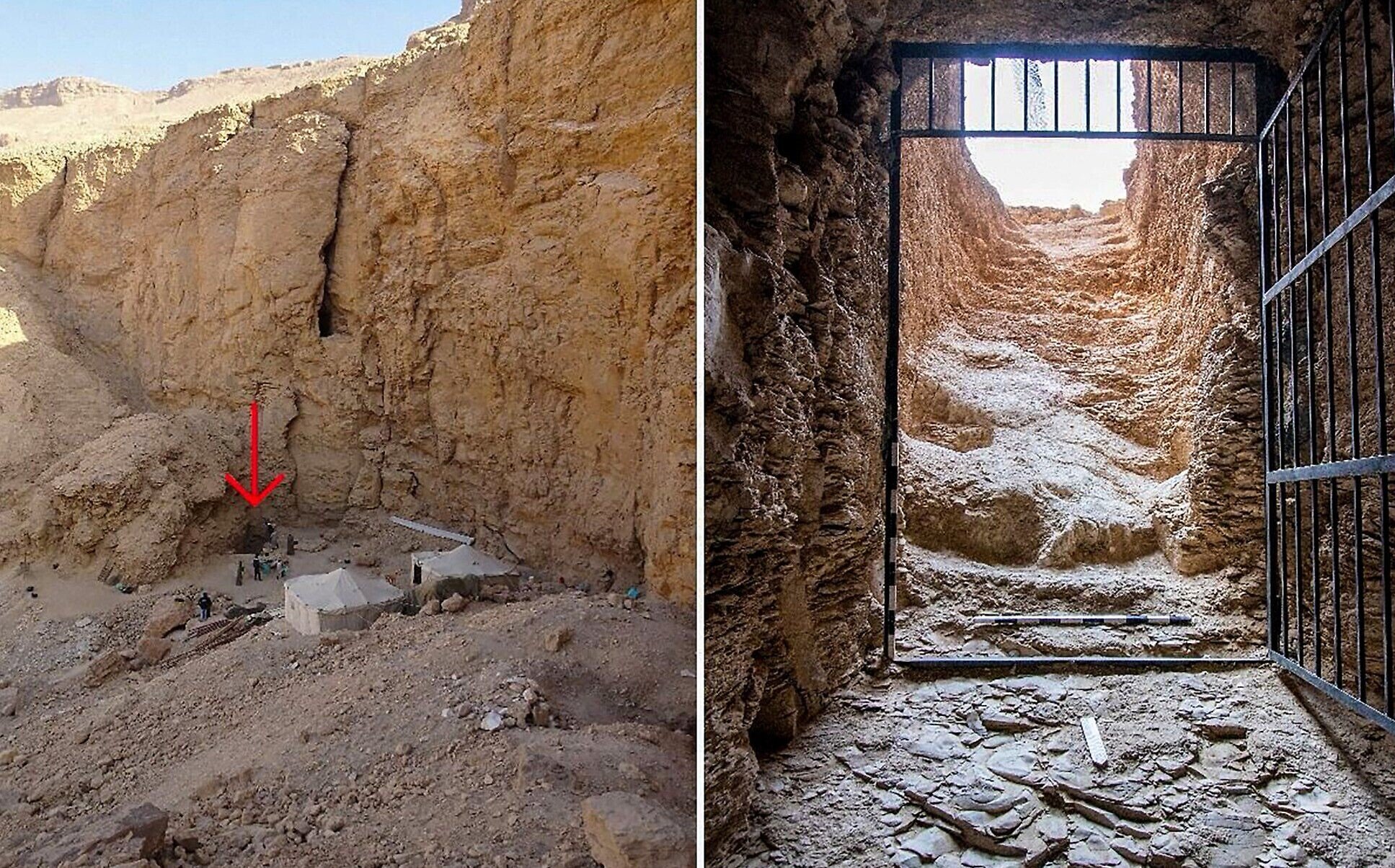Islamabad, Feb 20: In a groundbreaking discovery, archaeologists have unearthed the long-lost tomb of King Thutmose II near Luxor, marking the first royal burial site uncovered in Egypt in over a century. The Egyptian-British excavation team, working west of the Valley of the Kings, has now concluded the search for the final missing tomb of Egypt’s 18th dynasty pharaohs, according to an announcement by Egypt’s Ministry of Tourism and Antiquities.
The significance of this find cannot be overstated, as it is the first royal tomb discovery since King Tutankhamun’s legendary tomb in 1922. The identification of the burial site was confirmed through alabaster vessels inscribed with the names of Thutmose II and his wife, Queen Hatshepsut one of Egypt’s most renowned female rulers. Additionally, archaeologists uncovered fragments of funerary furniture, alongside remnants of mortar inscribed with blue and gold religious texts and decorative elements featuring yellow stars.
READ MORE: UFC Featherweight Champion Ilia Topuria Vacates Title to Move Up to Lightweight
However, despite the historical importance of the find, the tomb’s condition has been severely compromised. Experts believe that flooding soon after Thutmose II’s death led to significant structural damage and loss of burial artifacts. Many of the tomb’s original contents are missing or believed to have been relocated in antiquity.
Nevertheless, the discovery is expected to provide new insights into the burial traditions of ancient Egyptian royalty and shed further light on the mysterious reign of Thutmose II, who ruled during the New Kingdom period (circa 1493–1479 BCE). Ongoing recovery efforts aim to preserve the site and reconstruct its historical significance, ensuring that this remarkable breakthrough adds to Egypt’s rich archaeological legacy.









